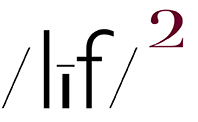(embiggenable)
(embiggenable)
(embiggenable)
“…all photographers of stature whom I admire seem to share this fundamental characteristic: a deep and long-lasting respect and love for the subject matter…” ~ David Hurn
iMo, ONE MIS-UNDERSTOOD AND, QUITE POSSIBLY, destructive piece of oft recommended picture making advice is that a picture maker who is looking for his picture making passion should seek out a subject matter that he/she really cares about.
On its face this seems to be a smart thing to do. However, the problem I see with it is that it almost always leads to thinking about “subject matter” as an actual, literal / physical thing-a people, a place, or an object. A picture making alley that leads to an endless stream of pictures of ever popular subject matter; pictures in the making of which techniques and effects, aka: art sauce, are employed in an effort to “see” the same old stuff in a “different” manner from the rest of the literal subject matter focused picture making crowd.
The advice often goes on to state that…
“if images are not rooted in “the thing itself” then…the photographer has not learned anything about the real world.” ~ David Hurn
…to which I would respond that there ain’t all that much to be “learned” about the real world from the viewing of pictures which show us the same old stuff over and over again-stating and re-stating the obvious-no matter how much technique / effects have been applied.
All of that written, if one looks at the advice, re: finding subject matter, with the idea in mind that subject matter does not have to be a tangible, physical thing, then, iMo, you’re heading down the right track. I write that cuz one is then entering the picture making zone wherein one makes pictures in which concept-not the actual, literal referent-is the subject matter.
Consider, for the moment, my pictures.
The concept-my “subject matter” as opposed to my referents-that drives my picture making is my intent to illustrate and illuminate the fact-the undeniable truth to be found in my work-that the quotidian world is awash-when one has a picture making device in hand and the eye to see it-with seemingly random and serendipitous arrangements of virtually any real world objects that, when isolated and captured within a picture maker's framing, are fertile ground for making images with, to my eye and sensibilities (and to that of others), interesting visual energy and form which creates it own sense of beauty.
And, let me add to that-considering the pictures in this entry-that I do not have “a deep and long-lasting respect and love for” egg yokes, greasy water in a pan, or the things in my kitchen dish rack.
Nevertheless, despite my lack of love and respect for the diverse things-the referents-in my pictures, they are an integral element in my pictures inasmuch as…
“…resourceful photographic formalists regard the complexion of the given environment as potentially articulate aesthetic material….they [ed. I] consider the subject and its visual essence as indivisible….[they] perceive real objects and intervening spaces as interanimating segments of a total visual presentation….The resultant image exists simultaneously as a continuous visual plane on which every space and object are interlocking pieces of a carefully constructed jig-saw puzzle and a window through which the viewer can discern navigable space and recognizable subject matter…” ~ Sally Eauclair
The actual real world referents-the unconventional things, beauty wise-in my pictures also contribute to the perplexity / discomfort many have when viewing my pictures (the oft-heard, “I don’t know why I like these pictures, but I do.”)…
“.…many great photographs displaying beauty reveal a sensation of strangeness, not predictability, a kind of shock non-recognition inside the familiar. They are the opposite of cliche.” ~ David Hurn
All of the above written, I believe that “the thing itself” to be seen in a photograph is, quite simply, the photograph itself and, collectively, that which the photograph illustrates and illuminates.
ADDENDUM It should be understood that this entry is not suggesting / implying or otherwise insinuating that it is impossible to make photographs of things considered to be of conventional beauty that also conveys a concept that is beyond the obvious. However, I can write, without a moment’s hesitancy, that it is very easy to be seduced into thinking that a referent’s conventional beauty is all it takes to make a photograph interesting.
